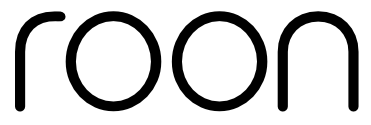Some of you may have encountered the word metadata and thought, ‘I see this term every time Roon is mentioned… but, what exactly is metadata’? Chances are you’ve enjoyed its benefits and know what it is, even if you haven’t bothered with an etymological investigation. In this installment of How to Roon we’ll explore the metadata matrix, because this is where things get exciting.
Have you ever listened to a track, heard some amazing sonic nugget tucked inside, and thought, “Whoa! Who was that?” Or maybe you’ve listened to an album that unfolds like an exotic orchid and wondered what other gems that producer has crafted. Well, friends, you’re delving into the world of metadata. And let me tell you, Roon is a music wonderland that weaves deep connections between artists and recordings — creating paths through music history that feel like hidden trails through a sonic forest!
Metadata: The secret sauce that gives your collection additional flavor
Think of metadata as the DNA of your music library. It’s all the juicy details about your tunes that go beyond artist and track names. We’re talking album artwork, release dates, genres, record labels, recording studios, album & track credits, production info, liner notes, artist bios, album reviews — the works! It’s the stuff that transforms a simple list of songs into a rich, interconnected musical universe.
You may be thinking, “Yeah! I love all this stuff, but how does Roon use it to make my listening experience better?” Let’s dive into that!
Roon’s metadata mastery: you can do magic
Here’s where our Roon knows your music mantra begins. While other music players might give you the basics, Roon takes metadata to a whole new level. It’s like having a music historian, a record store clerk, and a die-hard fan all rolled into one, living inside your music library 24/7/365.
Roon doesn’t just display metadata; it weaves it into a tapestry of musical connections. Let’s break it down:
1. Accuracy: Roon cross-references multiple sources to ensure you’re getting the most accurate and detailed info about your music. No more head-scratching moments where canonical albums lack basic information.
2. Deep Dive Delerium: Want to know who played that face-melting guitar solo, or was responsible for that sax part, or who’s tickling the ivories (probably Leon Russell). Maybe you’re wondering which Dread cooked up a dub or what studio an album was recorded in? If so, Roon’s got you covered with incredibly detailed credits.
3. Connection Confections Everywhere: This is where things get really cool. Roon uses metadata to create a web of relationships between artists, albums, and tracks. You can unearth collaborations you never knew existed or pull up albums that feature that session drummer you love then use Smart Playlists to instantly convert them into hours of listening enjoyment.
4. Artwork Overload: Album artwork in high resolution, artist photos that make you feel like you’re at a private show — Roon turns your library into an audio art gallery.
5. Context is King: With rich bios, reviews, liner notes, and historical info, Roon doesn’t just play your music; it takes you inside it with stories that bring your favorite sounds and new discoveries to life.
Ok, but how does all this metadata stuff actually work?
Here, peek behind this curtain for a second. When you add music to Roon, it springs into action like an arrangement & description archivist on amphetamines. It scans your files, looks at any existing metadata, and then goes hunting for more. It checks multiple online databases, cross-references information, and even uses audio fingerprinting to identify tracks and get dynamic range deets.
The result? A meticulous metadata makeover that would make any music librarian weep with joy. Your messy, inconsistent files tags are quickly transformed into a coherent, richly detailed library in Roon. Everyone who has taken on manual metadata cleanup knows how taxing it is. You spend ALL of your time grooming instead of enjoying music. Yuck! Life is too short, dude.
And here’s a kicker — Roon doesn’t just do this just once and call it sorted. Roon is constantly updating, refining, and expanding its metadata. Your library becomes a living, breathing entity that grows richer over time — without you lifting a single cut and paste finger.
The best part is all this work acts as fancy duds for your files. None of your stored music is ever overwritten or changed in any way.
Ooooh, fun, then what
Once all the metadata is cut, sewn, and tailored it makes discovering and enjoying music infinitely more awesome. It’s the difference between having disheveled digital music mess and employing an army of virtual music cataloguers to tidy and file everything perfectly.
Imagine starting with one artist and going on a journey through their collaborators, influences, and related acts. Or diving into the history of an album and uncovering the context in which it was created. This is how you fall in love with music all over again, how you discover new favorites, and how you gain a deeper appreciation for the artists you already admire. I call it the web of sound and it’s wildly addictive.
Discovering a whole new Rooniverse
Look, there are plenty of ways to play digital music out there. But with Roon, you’re not just playing tracks — you’re exploring a rich, interconnected complex of music connections. It’s the difference between looking at a map and actually traveling the world.
So, the next time you fire up Roon and find yourself lost in a bottomless rabbit hole of musical discovery, spare a thought of gratitude for the humble metadata that makes it all possible. It’s the unsung hero that turns your collection into a living, breathing celebration of music.
Ready to dive into this ocean of musical knowledge? Give Roon a free spin and see your music collection illuminated a whole new light. Trust me, once you experience Roon’s metadata magic, you’ll wonder how you ever lived without it!

